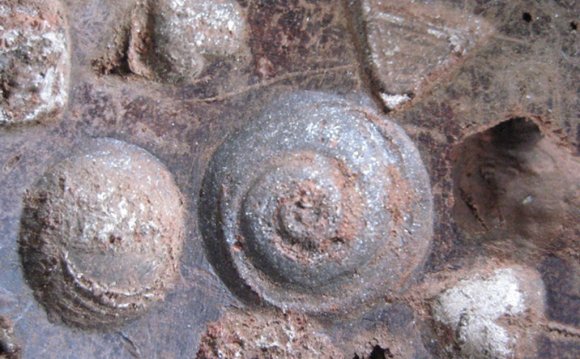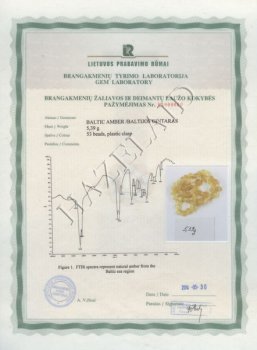
 BASIC INFORMATION
BASIC INFORMATION
All amber is fossilized tree resin. Baltic amber in particular (mined from near the Baltic Sea) additionally contains a substance called succinic acid. When worn on the skin, body heat causes the amber to release an oil containing succinic acid, which when absorbed into the skin, works like a natural Ibuprofen, blocking pain and reducing inflammation. Note that succinic acid is an alkalinizing acid (like lemon juice) so it won't add to your body's acidity, and may actually slightly lower it. So it’s totally comparable with hazelwood jewelry, though both shouldn’t be worn around the neck at the same time (but you can safely wear both on different areas of the body, or use a necklace that contains both).
Baltic amber has some of the highest concentrations of succinic acid found in nature. Commonly known as "teething jewelry" in Europe, Baltic amber jewelry has been a natural remedy for pain relief for hundreds of years. Note that to function well, it must be worn close to the source of pain. For teething pain, this has traditionally been in the form of a necklace. All Baltic amber teething necklaces come safety-knotted and have safety releases built in.
WHAT CAN BALTIC AMBER HELP WITH?
Pain Relief: Baltic amber contains analgesic properties and helps take the edge off of many types of discomfort associated with dental issues, headaches, joint pain, etc. It is a well known European method to help decrease the pain associated with teething. Strengthening the body's immune system. In many different and subtle ways, succinic acid helps boost the body's own natural healing ability and immune system.
Inflammation: Where chronic inflammation is present, disease lurks. When the body’s cells are chronically inflamed the human body’s immune system response is to increase production of free radicals. Chronic overproduction of free radicals results in inflammatory-related disease. Chronic inflammation can be the common denominator of many seemingly unrelated diseases.
Restoring Energy: The human body naturally produces succinic acid. The salt of succinic acid (succinate) is one of the most active substances in the processes of cellular respiration and intercellular energy creation. Succinic acid restores oxygen and energy supply to depleted cells and helps the body return to a normal, functioning state.
HOW OUR BALTIC AMBER IS MADE
Each piece is handcrafted by Lithuanian artisans, known locally as 'Masters', who carefully polish and round the shape of each Baltic amber bead so it rests gently against the skin. This ensures maximum skin contact and comfort. The string in each of our amber necklaces and bracelets is knotted by hand in between each and every bead, so should the necklace break the rest of the beads will not scatter. In the unlikely event that a bead should be ingested, amber is a non-toxic substance and is not harmful. The necklace fastens with a plastic amber colored screw clasp that opens and closes easily, and functions as the safety-release mechanism.
NOTE - We are switching over from a twist clasp to a 'pop' clasp on our children's Baltic amber jewelry, for a while we'll have both. If when ordering you have a preference please let us know and we will get back to you on if we are able to make it happen! An example pic of the pop-clasp are on each listing so you can see what they look like.
Wait! Are the old twist-clasps as safe as the new pop-clasps?
Yes they are! :) We're just making a switch because ultimately it seems better to have a safety mechanism that is more easily visible to parents and where if it is activated doesn't require the replacement of the necklace. It MIGHT end up in a few more lost necklaces but we'll see. Please let us know how you like the new clasps, we value your feedback! But yes, both clasps are safe.
Every natural Baltic Amber necklace is unique because each of the amber beads are unique. So the size, color, shape, and weight of each stone, as well as the length of the piece, will vary slightly. We work with our suppliers to develop consistent styles of color and shape, however as Baltic amber is a natural raw material that must be mined, the end product will fluctuate along with the natural flux in the Baltic Amber market.
NOTE - We've had a customer report an skin reaction issue with leaving Baltic amber on during an extended hot bath. Normally amber is removed due to the soaps involved, but if you are giving your child a bath (or taking one yourself) without soaps or chemicals, we'd recommend removing the amber just the same. We're not sure but the hot water may have caused the amber to become tacky or soft, to which a skin reaction occurred. Please exercise caution with exposing your amber to high heat or with wearing amber after it has been exposed to high head (left in a hot car, etc.).
HOW TO CARE FOR YOUR BALTIC AMBER JEWELRY
Because amber is soft and can be brittle, it’s important to be careful that it not come in contact with chemicals. Your amber should not be stored with other jewelry where it can rub against other pieces, especially metals. Be sure to keep perfume, hairspray, and soaps like shampoo and conditioner away from your amber, and never place your jewelry in commercial cleaning solutions. Remove your amber jewelry when bathing. Also remove when applying sunscreen.
To clean your amber, use a soft flannel cloth or an unused toothbrush dampened with clean lukewarm water. Dry in the sun or with a clean tissue or towel.
WANT EVEN MORE DETAILS?...
Baltic Amber is fossil of resin. Although not a mineral, it is generally classified as a gemstone. A common misconception is that Amber is made of tree sap. Sap is the fluid that circulates through a plant's vascular system, while resin is the semi-solid amorphous organic substance secreted in pockets and canals through epithelial cells of the tree.
Because it used to be soft and sticky, tree resin amber can sometimes contain insects and even small vertebrates, known in the jewelry world as ‘Inclusions’. Semi-fossilized resin or ‘sub-fossil’ amber is known as Copal (see more on Copal below).
Amber occurs in a range of different colors. As well as the usual yellowy-orange that is associated with the color "amber", amber itself can range from cloudy white, yellowish clear, to almost black. There is also red amber (sometimes known as "cherry amber"), green amber, pink amber and even blue amber, which is rare and highly sought after. No we don't have any blue amber, thanks for asking.
Baltic amber is distinguished from other amber from all around the world by the presence within it of high levels of succinic acid, hence Baltic amber is otherwise known as succinite.
RELATED VIDEO












